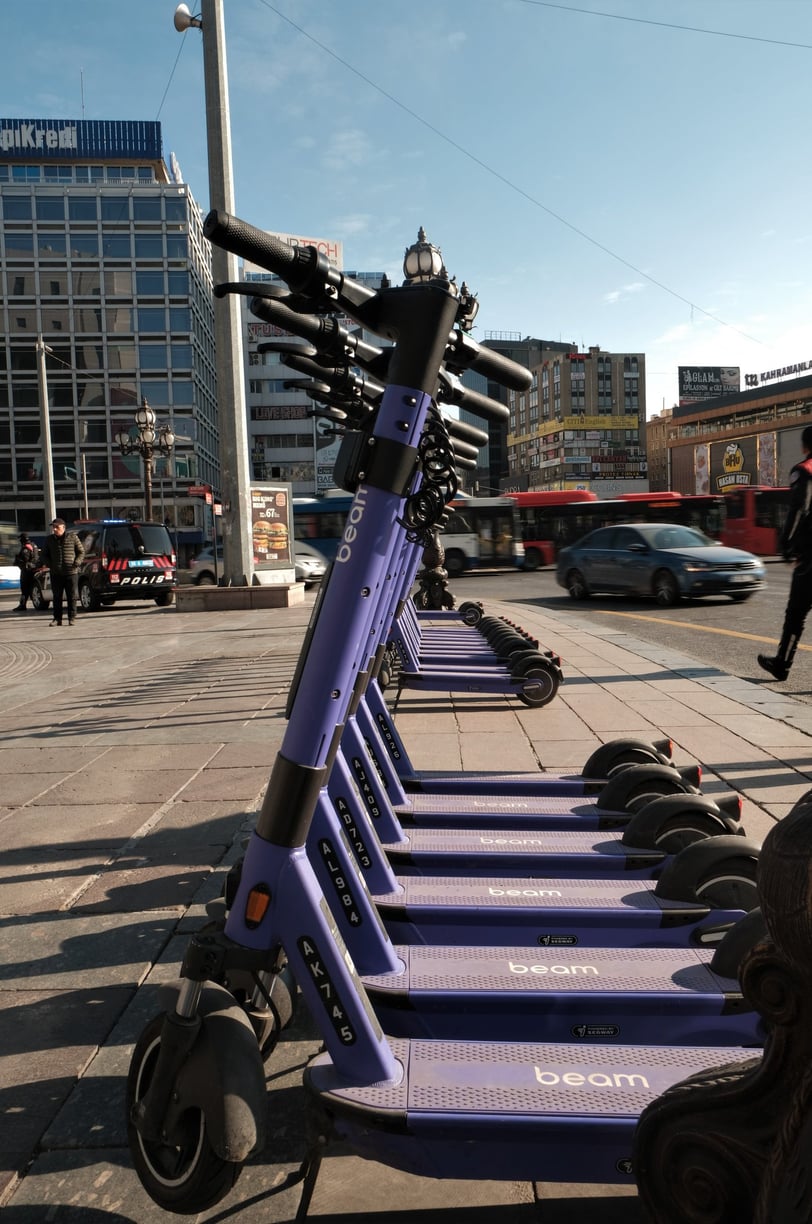A Bumpy Ride: Beam's E-Scooter Exit from Palmerston North
Article Summary Beam, an e-scooter company, is exiting Palmerston North, New Zealand, leaving residents disappointed and sparking conversation about the sustainability of micro-mobility services in smaller urban centers. The company cited viability issues as the main reason for their departure, highlighting the economic challenges of operating in smaller markets. The community and local council now face the task of rethinking their urban movement strategy. This raises questions about the future of similar services in smaller cities and the need for alternative micro-mobility models.
1/4/20242 min read


A Bumpy Ride: Beam's E-Scooter Exit from Palmerston North
Introduction
The urban tides are shifting in Palmerston North as the city bids farewell to Beam's electric scooters, a service that offered an eco-friendly travel alternative to its residents. While the scooters provided a modern twist to city commuting and the vibrancy of accessible, green micro-mobility, Beam has decided to pull back their wheels and part ways with the city. This move has left the pavement less colorful and stirred up conversations about the sustainability of such transport solutions, particularly in smaller urban centers.
Beam's Impact in Palmerston North
For a fleeting moment, the streets of Palmerston North buzzed with the electric hum of Beam scooters, as residents young and old embraced this fresh mode of transit. The scooters, recognizable by their distinctive branding, offered a convenient option for quick trips and injected a dose of innovation into the city's transport ecosystem. Usage statistics painted a promising picture, suggesting that Beam had found a niche among those seeking a zippy alternative to walking or driving. However, as the news of Beam's exit sweeps through the city, there is a palpable sense of loss among those who came to rely on the scooters for their daily commutes and spontaneous adventures alike.
Reasons for Departure
Beam's departure from Palmerston North is not an abrupt decision but the culmination of intricate industry challenges that ultimately swayed their direction. The e-scooter company cited viability issues, hinting at the economic hurdles that often accompany the operation of micro-mobility services in smaller markets. With a limited population to draw from, maintaining a profitable balance can be daunting. In addition, the interplay between operational costs, city regulations, and the demand for such services likely played a role in Beam's decision to retreat and refocus their efforts on landscapes more conducive to their business model.
Community and Council Reactions
The scooters' quiet departure has resonated loudly with the broader community. Palmerston North's local council, having welcomed Beam's venture as part of a greener transport future, now faces the task of re-envisioning this facet of their urban movement strategy. E-scooter enthusiasts, who found joy in the convenience and novelty, expressed disappointment, while critics of the service may view this as a point of vindication. This mixed bag of reactions underscores the complex dynamics of introducing new technologies into established urban routines, revealing the delicate balance between innovation, practicality, and public sentiment.
Implications for Urban Mobility
Beam's exit marks a significant junction for Palmerston North's urban mobility landscape. The withdrawal underscores the fledgling state of micro-mobility solutions in smaller cities, where the market dynamics differ markedly from larger metropolises. Beam's departure raises questions about the viability of similar services and the ongoing effort to diversify transportation options in such communities. Looking ahead, the city must navigate these complex waters, possibly seeking new partnerships or exploring alternative micro-mobility models that better suit the unique demands of a smaller urban populace.
